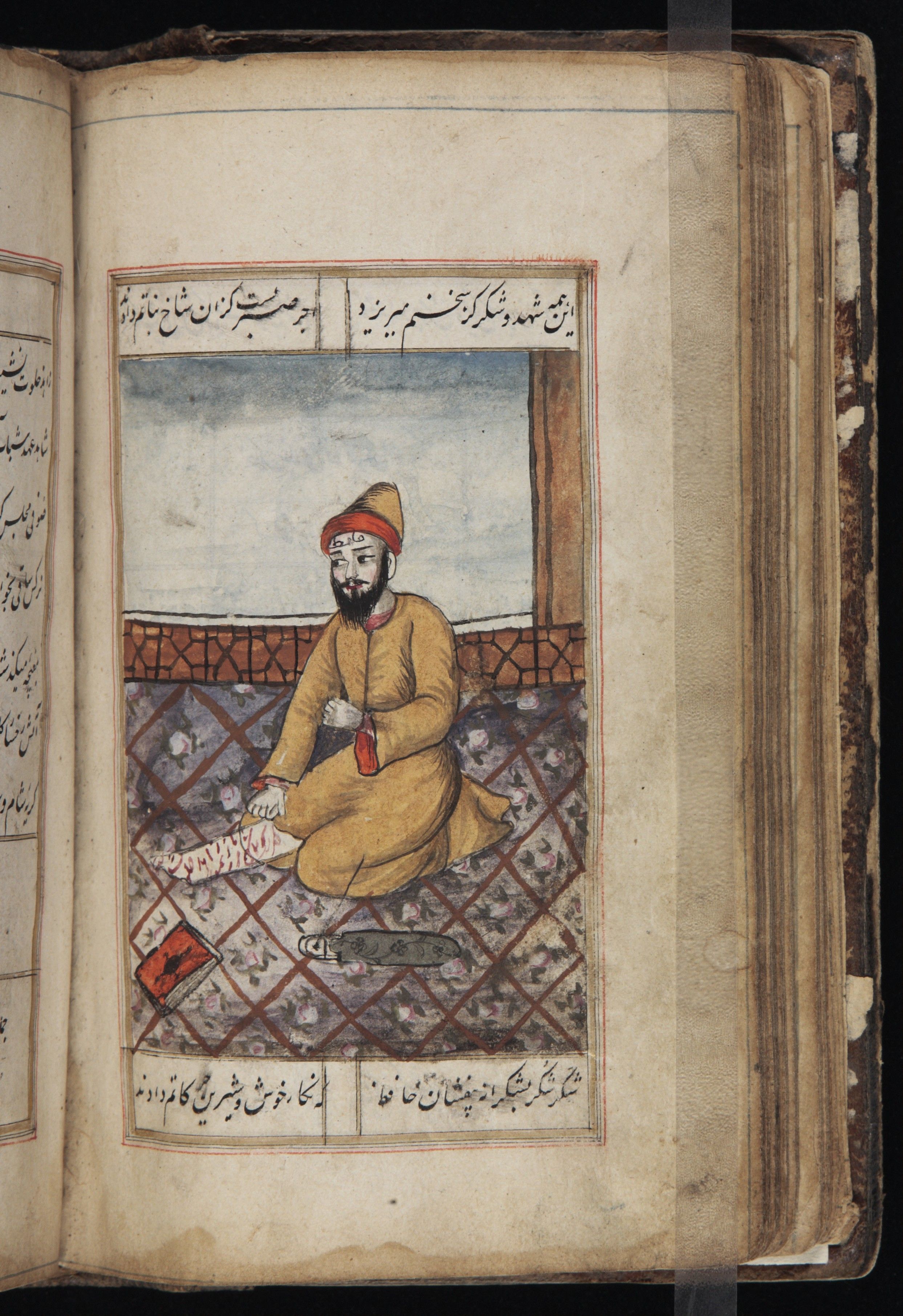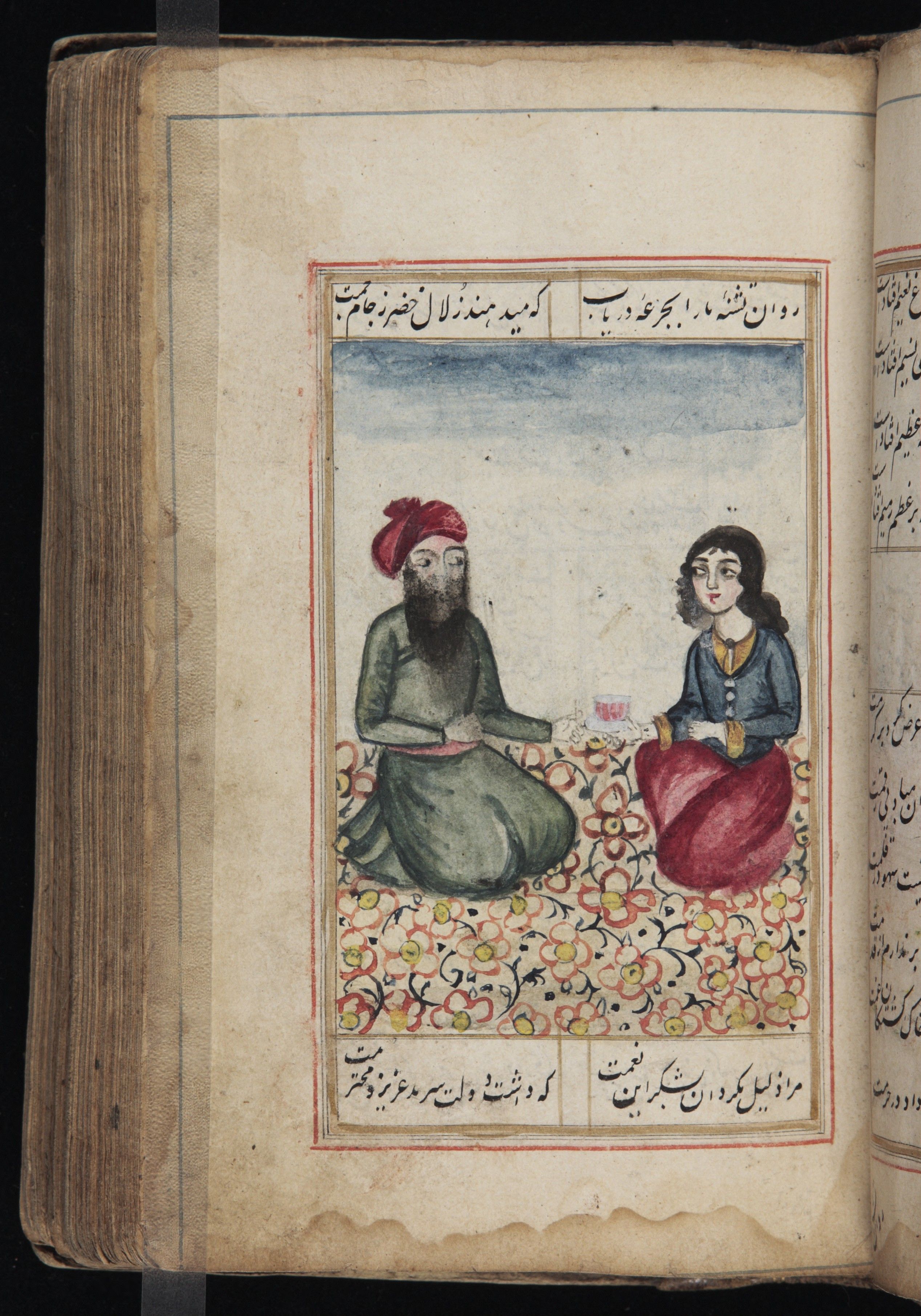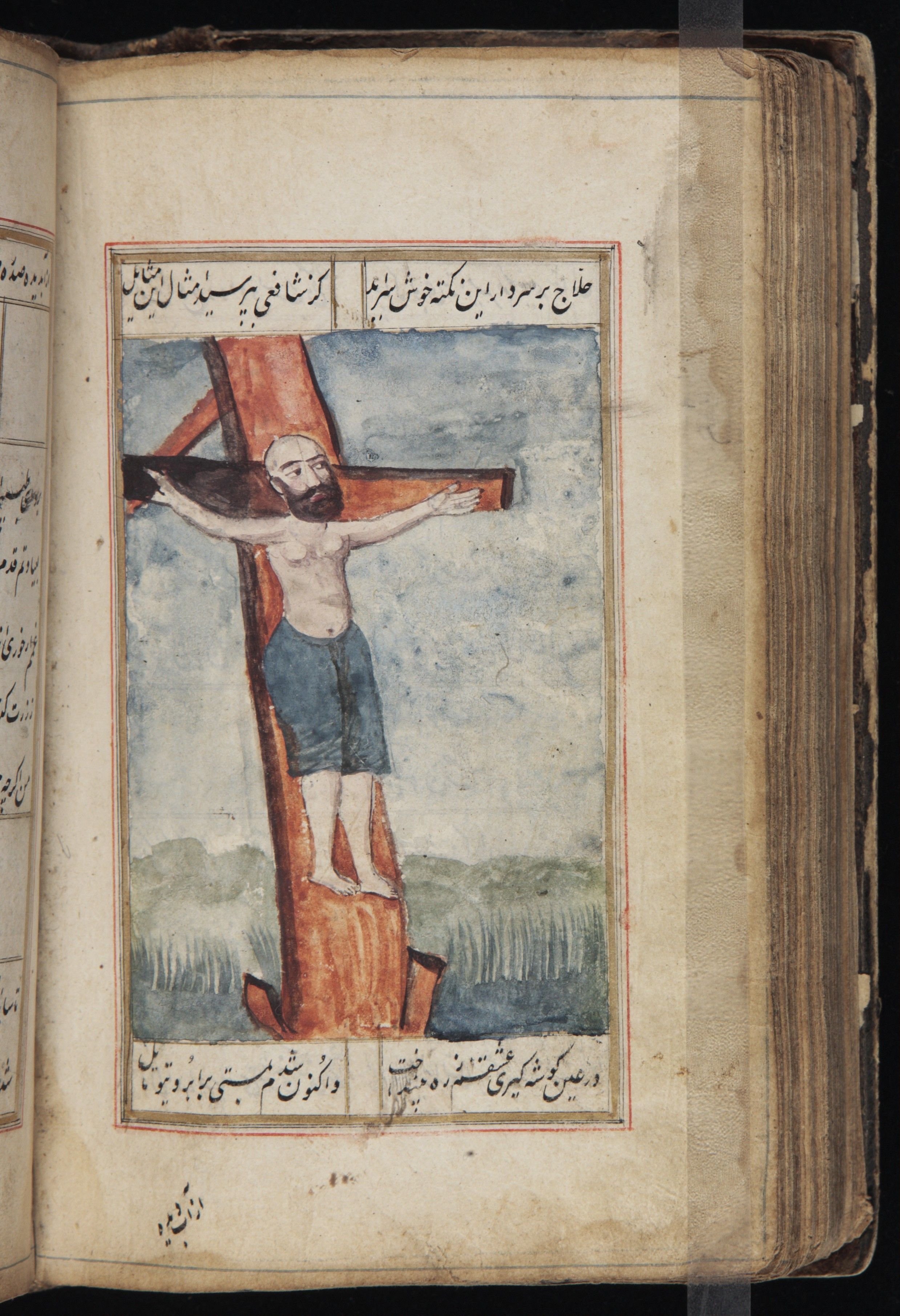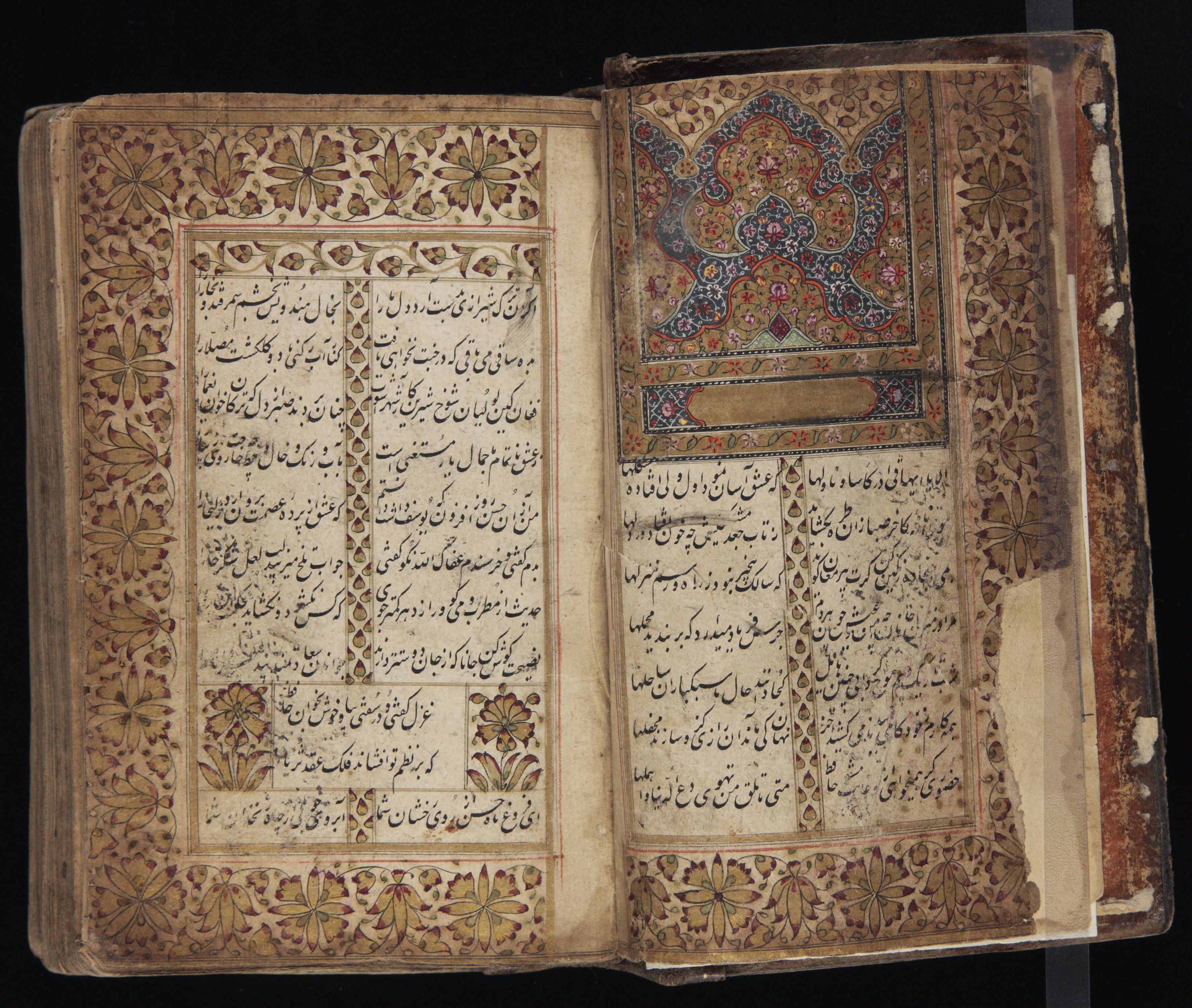Collected poems of Hafez (1325-1390)
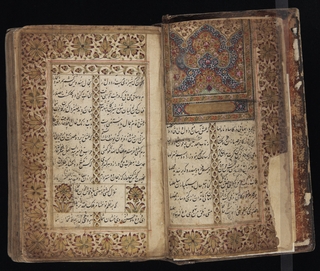
Collected poems of Hafez, 1325-1390, Persian
Call Number Persian MSS 1391800s
Beinecke Rare Book and Manuscript Library
Within the Persianate world, the Dīvān of Ḥāfeẓ, a collection of ghazals, has long held devotional value as a physical and representative object. As physical objects of devotion, manuscript copies of the Dīvān were, in multiple post-Timurid Islamic contexts, subject to physical contact, including deliberate alterations and ritual touching The Dīvān can function as a ritual object also in its existence within a textual, verbal, recited realm. It was central to a mystical discourse promulgating the importance of this realm, a discourse that pervaded broad swathes of the Persianate world from the 14th and well into the 19th century. Within that discourse, the ghazal form functioned as a key mechanism for offering access to purportedly primordial and inexhaustible gnostic truths.
An illustration in the Dīvān features a man with a beard rendered atypically; this could point to an effort made by the original artist or a later viewer to blur prior damage to the man’s face or to conceal his identity. The man’s abnormal features mark him as a magnet of attention, again either from the original illustrator or another individual, and possibly as Khiẓr himself. This attention-drawing strangeness accords with common mystical tropes of the lover and the seeker of divine union, being out-of-step with the commonplace people of the world (ahl-e-jahāñ); the man is, therefore, as a physical illustration and as a figurative ideal, an object of devotional importance, as is the Dīvān itself.
Sources:
Brookshaw, Dominic P. Hafiz and His Contemporaries: Poetry, Performance and Patronage in Fourteenth-Century Iran. London: I.B. Tauris, 2020.
Hafez, Bly, R., & Lewisohn, L. The Angels knocking on the tavern door: Thirty Poems of Hafez. New York: HarperCollins Publishers, 2009.
Soucek, Priscilla. “Interpreting the Ghazals of Hafiz.” RES: Anthropology and Aesthetics, no. 43 (2003): 146–63.
Flip through the collection
